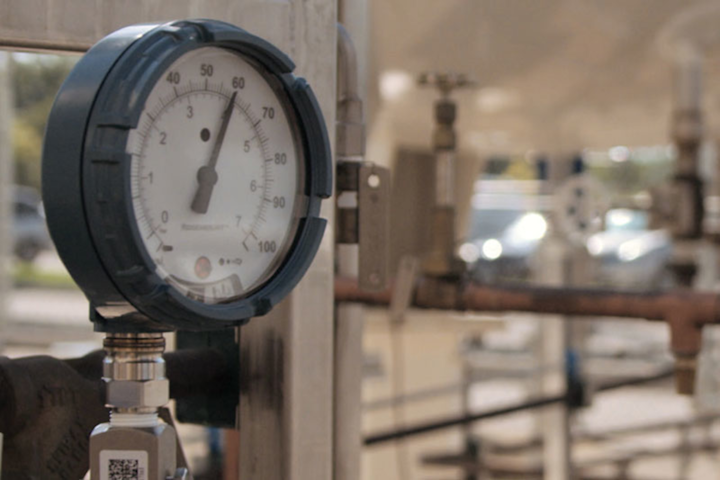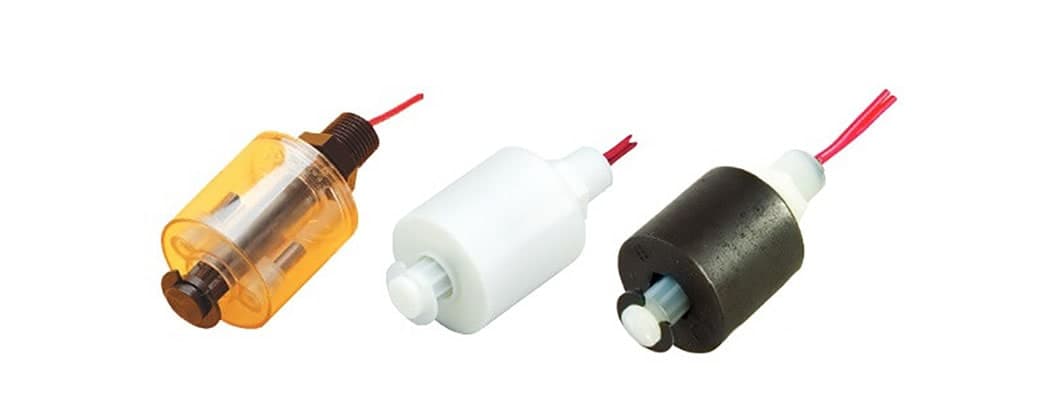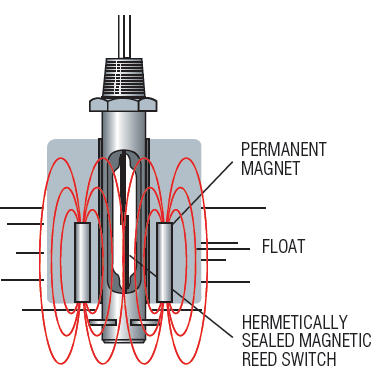INDUSTRY TRENDS IN CONTROL VALVE AUTOMATION

Advanced solutions for fugitive emissions monitoring enable process plants to schedule valve maintenance to minimize air pollution from their facilities and avoid fines.
Control valve automation has made major advancements over the last several years. While control valves themselves are largely unchanged, greater emphasis is on automating and precisely positioning these instruments.
This article describes the importance of control valve automation in modern process plants, as well as considerations for ensuring optimal valve performance. When choosing a device or technology to automate valves, many factors come into play. They include specific application requirements, electric certifications, safety integrity level (SIL), digital protocols versus traditional analog communication and more.
Introduction
A valve positioner is a critical component of the final control element of a process loop — the control valve. Positioners convert electrical signals to pneumatic signals to control actuator displacement. This ultimately keeps a valve at an intermediate position in response to a variable process control signal.
Control valve positioner manufacturers must meet rigorous requirements for efficiency, reliability and reduced energy consumption while producing cost-effective instruments that satisfy industry requirements. The need for predictive diagnostics is a demand placed on valve positioners. It is critical to predict failures in the valve, control signal and positioner before they become a catastrophic event and shut down the plant.
Recent advancements
The control valve industry does not innovate as quickly as other technology-centric fields. Instead of major breakthroughs of ingenuity, designers slowly adapt and improve products over time, providing a slow but constant rate of progression.
In the past decade, smart and digital valve positioner developments have outpaced performance capabilities of mechanical and electro-pneumatic systems. Digital communications protocol advancements allow smart controller technology to make progress and integrate more sophisticated functionality.
For example, positioner manufacturers are moving away from designs that require direct contact with the valve stem for feedback to the positioner in favor of noncontact, Hall effect sensor technology. Improvements in device diagnostics play an important role by facilitating the transition from traditional corrective and schedule-based maintenance to predictive maintenance. Diagnostics with valve positioners are becoming much more sophisticated and offer the ability to test valves to determine if maintenance or replacement is required.
Developments such as digital fieldbus protocols and low-power central processing units hastened the evolution of the valve positioner as a computer. Just as process sensors and controllers acquired smart capabilities, valve positioners and controllers followed the same route.
The introduction of intelligent control valve positioners with internal capabilities for trending, diagnostics, alarm status, etc., eliminates the need for external software in many cases. This approach is more fail-safe and secure for end users since setting changes must be made physically at the valve positioner. Moreover, maintaining valve history data in the positioner rather than in the distributed control system software ensures valuable information is not lost if the positioner is removed from service. The ability to locally configure the positioner also eliminates the need for a costly handheld device.
Some of the most significant innovations in automated valve monitoring relate to supply air (i.e., measuring and recording the supply air pressure to the positioner and providing an alarm if it drops below a set pressure), output air (i.e., measuring and recording the output air pressure to the actuator and providing an alarm if it is not present after a period of time), emissions (i.e., detecting a leak in the bellow section of the control valve and closing the valve without outside control if a leak is present), and emergency shutdown (ESD) solenoids (i.e., testing and determining if the solenoid will operate as required in an emergency).
A particularly important enhancement to automated valve technology is the partial stroke test (PST), a feature within the positioner that will move an ESD valve from 100 percent open to a predetermined position (80 percent) and then back to 100 percent. This indicates the valve will move when required. New techniques allow plants to perform PST either from an external source or automatically based on a set interval, with reports indicating pass-fail results of the test.
In addition, the current generation of smart positioners can utilize discrete inputs and discrete outputs to trigger an output for control, while valve friction monitoring indicates the increase or decrease of friction in the valve and the type of hysteresis it is causing.

Ongoing developments in smart and digital valve positioners have had a dramatic impact on plant efficiency, overall profitability and asset life cycle costs.
As far as improvements to instrumentation and system health, valve signature tests can be conducted to accurately evaluate the condition of a valve’s internal components. This helps eliminate unnecessary equipment service, spare parts purchases and valve replacement. Trending and histograms can run in the background to track positioner performance, and an alarm status list can provide a record of alarms. These advanced features enable process plant planners to determine the overall health of their instrument assets and then formulate effective maintenance strategies.
Some positioner manufacturers have pioneered advanced solutions for fugitive emissions monitoring, which can help avert failure of the valve’s bellow seal and packing — and the potential for discharge of hazardous gases. These solutions enable the positioner to internally sense the bellow seal housing, open or close the valve, or move it to a predetermined position if the pressure becomes too great. Should the positioner sense a leak, it can initiate an alarm alerting operators to the valve’s status. Through early detection of fugitive emissions via leak monitoring, plants can immediately schedule maintenance to minimize air pollution and avoid fines.
Lastly, energy consumption is a critical concern for industrial equipment. Control systems were once designed with the power supply at 1 1/2 times the current requirements to power individual loops. Plants have gradually increased their power consumption demands on each input/output cabinet to the point that it affects field instruments. Instrument manufacturers responded to this situation by developing new, energy-efficient positioner designs. Earlier valve positioners required approximately 2 to 3 watts (W) to operate, whereas the current generation of positioner requires 1/2 to 3/4 W to operate even with advanced features.
Choosing the right solution
Modern control valve positioner designs allow them to be used as on-and-off devices or for any combination of controlling to include regulation, modulation, mixing or even isolation. Valve positioners are highly engineered instruments and should not be treated as commodities. Addressing control valve performance has a dramatic impact on plant efficiency, overall profitability and asset life cycle costs.
Process plants have two primary requirements for control valves: ease of use and cost-effectiveness. When choosing a device to automate valves, however, a number of key factors come into play:
- Specific applications requirements
- Explosion-proof
- Intrinsically safe
- Remote-mounted
- High-temperature
- Low-temperature
- Electrical certifications
- FM
- CSA
- ATEX
- usCSA/FM
- SIL rating
- Safety system
Communication drives automation in complex industrial facilities. Control valve positioners must be able to communicate with all recognized field device protocols, ranging from traditional analog to HART, Modbus, Profibus, FOUNDATION Fieldbus and Industrial Ethernet.
Valve positioner technology that integrates digital communications provides plant operators with greater visibility and control over critical assets. Smart valve positioners offer enhanced capability and practical benefits in relation to improved plant performance and greater operational efficiencies.
The main reason digital positioners are popular is they can do much more than control the valve’s position. The newest positioners can also collect data about the valve to automatically alert users about its performance and assembly.
Looking to the future
A natural response to the increasing economic, environmental and competitive pressures is to modernize automation technology, and many companies are investing in powerful, state-of-the-art control instrumentation as a result.
Technology is available to help process plants streamline operations and make them more efficient. One example is valve automation. Automated valve solution suppliers develop features to meet changing industry requirements. New forms of communications are coming, as well as tools to meet additional diagnostic requirements. The switch from pneumatic linear control valves to electrical linear control valves is on the horizon.
Control valves are a natural fit for digital intelligence and they may be one of the most important elements of a successful plant asset management strategy. With more intelligent valve automation capabilities, end users can better diagnose and repair a problem prior to failure.
Conclusion
Enhanced control valve automation helps all kinds of manufacturers continually improve process efficiency and product quality while safeguarding people, plants and the environment.
The latest generation of smart control valve positioners enables industrial organizations to do more diagnostics locally and better understand overall valve performance at a lower cost.
Any decision to use a positioner on a valve should be made with a knowledgeable and experienced control valve specialists who can advise on the proper type of positioner and installation technique crucial to optimizing the control valve.





